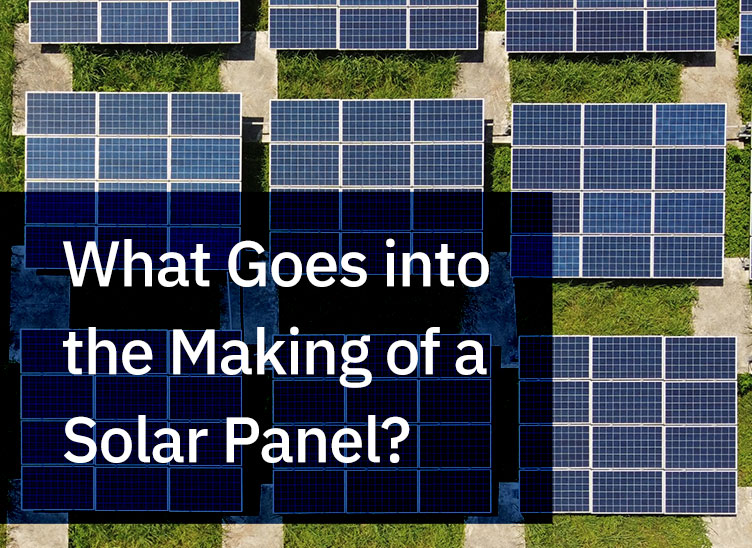
What Goes into the Making of a Solar Panel?
Most consumers look at those solar panels on a home or on a huge solar farm and know that they’re somehow producing energy, but they don’t look much further than that to see everything that goes into making these devices.
How are solar panels made? What are they made of?
This technology has grown and evolved over the years, producing more energy, more efficiently, which has led to much more widespread adoption across the country.
The need for high-quality components, however, has not changed. In order to achieve the results and continue to develop the technology, every component needs to contribute to the efficient operation of the photovoltaic solar panel.
So, let’s take a closer look at what, exactly, goes into the making of solar panels.
The Main Components of Solar Panels
There are a wide range of chemical components and other materials that go into a solar panel, and everything has to pull its weight in order to produce enough energy to be a sustainable and effective source of energy.
The main component of almost all photovoltaic (PV) panels is a crystalline silicon wafer. These silicon semiconductors are what actually generate the electricity. Simply put, when they’re hit with sunlight, the electrons are popped out, which generates usable power.
There are three types of solar panels currently available for consumers: monocrystalline solar panels, polycrystalline solar panels, and thin film solar panels. These each use variations of the silicon material, but the manufacturing processes are similar. The way each of these silicon components function, though, can have an impact on the overall performance of the solar cell, so it’s important to discuss your options before choosing your materials.
There are, of course, many other operational parts that play a big part in a cell’s functionality, which includes the wiring, glass, anti-reflective coatings, metal, and more. Let’s not forget the wide range of plastic and rubber solar panel components that are used for: fast clamp inserts, solar panel rubber inserts, solar frameless clip assemblies, electrical coverings, and a variety of other components.
How It All Comes Together
The manufacturing process has become fairly standard across the industry. It all starts with those crystalline silicon wafers.
Silicon cells are created by melting the silicone down and mixing it with a number of other components. Silicon – found in sand – is readily available, but converting it into the high-grade silicon that produces energy can be a costly and energy intensive. (More on this, below.)
From there, the silicon in converted to ingots and then sliced into wafers. These wafers are used to produce solar cells which are then used in the construction of a solar panel. This requires everything to be correctly configured and connected. The conductive metal, the base houses for the cells, and everything else has to work together in an efficient manner to transfer the electricity where it needs to go.
Is The Production Process Environmentally Friendly?
While there’s no doubt that the energy produced by a solar panel is very clean, it would be disingenuous to say that the manufacturing process is in the same category.
Many detractors will be quick to bring this up in any discussion of clean energy, and there is a point to this side of the argument. When you manufacture anything, there will be some kind of biproduct that you have to deal with, whether that’s more carbon dioxide or other leftover chemical elements.
However, the solar panel technology and manufacturing techniques have continued to improve greatly over the years. Now, they are using more environmentally friendly materials and processes, and designs include “end of life” plans from the very beginning so that the eventual disposal will also be more environmentally conscientious.
It’s a matter of looking at the big picture. Manufacturing processes will always have some kind of environmental impact, but with a lifespan of more than 25 years, making solar panels can spread that impact out over all that time while it constantly produces clean energy.
If you have any questions about what goes into these solar panels, and which of our components are used in this process, contact us today to learn more.
